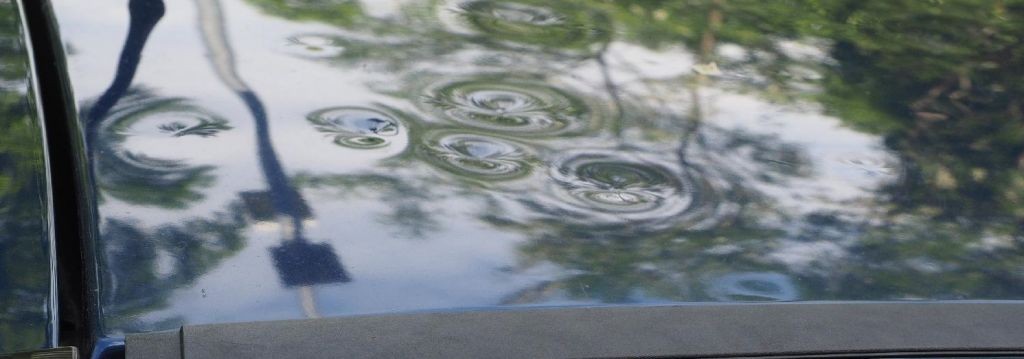Almost every car owner has faced the frustration of finding a new scratch or dent on their vehicle. Whether it’s a minor scrape from a shopping cart or a small dent from an unseen obstacle, these imperfections can detract from your car’s appearance. While professional body shops offer comprehensive repairs, many minor scratches and dents can be effectively fixed at home, saving you time and money.
Understanding Car Scratches and When to DIY
Before you grab your tools, it’s important to assess the type of scratch you’re dealing with. Scratches vary in depth, and the repair method depends on how deep the damage goes.
- Surface Scratches (Clear Coat Damage): If you run your fingernail across the scratch and it doesn’t catch, and you see a white or light-colored mark, it’s likely only in the clear coat layer. These are the easiest to fix yourself.
- Paint Scratches (Base Coat Damage): If your fingernail catches in the scratch, and you see the color of your car’s primer or even bare metal, the scratch has penetrated the clear coat and the paint layer. These may still be DIY-able for minor cases, but require a bit more work.
- Deep Scratches (Metal Damage): If you can see bare metal exposed, the scratch is deep and requires more attention to prevent rust. While you can still address the cosmetic issue yourself, keep an eye on these areas for potential corrosion.
 DIY fix dents
DIY fix dents
Simple Steps to Repair Car Scratches
For minor surface scratches, polishing is often the only step needed. For deeper scratches, you might need a scratch removal pen or touch-up paint.
Polishing Out Minor Scratches
Polishing is effective for removing clear coat scratches and restoring shine. Here’s how to do it:
- Step 1: Clean the Area. Thoroughly wash and dry the area around the scratch. Use car wash soap and water to remove dirt and grime.
- Step 2: Apply Polishing Compound. Apply a small amount of car polish or scratch remover to a microfiber cloth.
- Step 3: Polish the Scratch. Using circular motions, gently rub the polish into the scratch. Apply moderate pressure and work in small sections.
- Step 4: Buff and Inspect. Use a clean microfiber cloth to buff away the polish residue. Inspect the scratch. If it’s still visible, repeat the polishing process. For deeper clear coat scratches, you might need to repeat this several times.
Using a Car Scratch Removal Pen for Deeper Scratches
For scratches that go beyond the clear coat but aren’t down to the metal, a scratch removal pen (also known as touch-up paint pen) can be a good solution. Choose a pen that precisely matches your car’s paint code for the best results.
- Step 1: Clean and Degrease. Clean the scratch area with car wash soap and water. Once dry, use a mild degreaser or rubbing alcohol to remove any wax or polish from the scratch.
- Step 2: Apply Touch-Up Paint. Carefully apply the touch-up paint pen along the scratch, trying to only fill the scratch and avoid getting paint on the surrounding good paint. Apply thin coats and let each coat dry completely according to the pen’s instructions (usually a few hours or overnight).
- Step 3: Level the Paint (Optional). If the touch-up paint is slightly raised after drying, you can lightly level it using a fine-grit wet sandpaper (3000 grit or higher) or a rubbing compound. Be very gentle and cautious to avoid damaging the surrounding paint.
- Step 4: Polish and Buff. After the touch-up paint is dry and leveled (if necessary), use a polishing compound and a microfiber cloth to polish the area and blend the new paint with the original finish. Buff to a shine.
Are Car Scratch Repairs Worth Doing Yourself?
Absolutely! Repairing minor car scratches yourself is cost-effective and can significantly improve your car’s appearance. It prevents minor damage from worsening and helps maintain your vehicle’s resale value. For superficial scratches, DIY repair is almost always worth it.
DIY Methods for Fixing Car Dents
Small, shallow dents can sometimes be removed at home without needing professional tools. Here are a couple of methods to try for minor car dent repair:
Dent Removal Using a Magnet
For shallow, easily accessible dents on steel or aluminum panels (check your car’s specifications), a strong magnet can sometimes pop the dent back out. Neodymium magnets are particularly effective.
- Step 1: Protect the Paint. Place a soft cloth or microfiber towel between the magnet and your car’s paint to prevent scratching.
- Step 2: Position the Magnet. Hold the magnet with the cloth and gently place it on the edge of the dent.
- Step 3: Slowly Pull Out the Dent. Gradually move the magnet towards the center of the dent, gently pulling outwards. The magnetic force might be enough to pop the dent back into place. Repeat as needed, working from the edges of the dent inwards.
- Step 4: Check and Repeat. Remove the magnet and inspect the dent. If it’s improved but still visible, repeat the process.
Using Vacuum Suction Cups for Dent Removal
Vacuum suction cups, often used for glass or tile lifting, can also be used to pull out dents. Specialized car dent puller suction cups are also available.
- Step 1: Clean the Dent Area. Wash and dry the area around the dent thoroughly.
- Step 2: Apply the Suction Cup. Choose a suction cup that is slightly smaller than the dent. Make sure the edges of the suction cup will make full contact with the car panel around the dent.
- Step 3: Create Suction. Firmly press the suction cup onto the center of the dent and engage the suction mechanism (usually a lever or pump).
- Step 4: Gently Pull. Once the suction cup is firmly attached, gently pull straight outwards, trying to pull the dent out. Avoid jerky motions.
- Step 5: Release and Inspect. Release the suction and check the dent. Repeat the process as needed, repositioning the suction cup if necessary.
By following these DIY methods, you can effectively address many common car scratches and dents at home, keeping your car looking its best and saving on repair costs. Remember to always work carefully and start with the least aggressive methods first.


